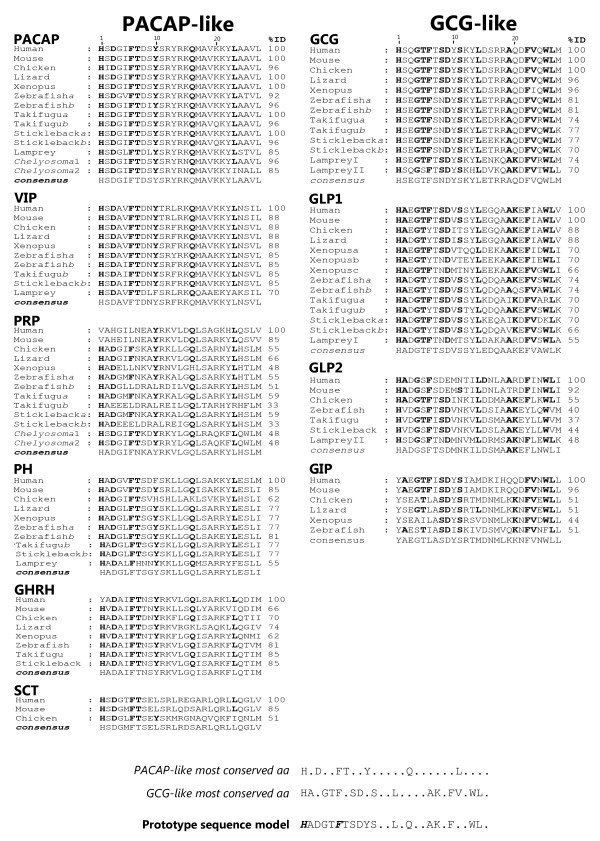
Figure 2. Amino acid sequence conservation of vertebrate secretin family mature peptides. The mature peptide sequences were extracted by comparison with the human homologues and only the amino acid (aa) residues 1 to 27 are represented with the exception of the first 5 residues of human GLP1 (P01275). Takifugu GHRH was obtained from [93] (N000079, Assembly_4) and the lamprey GLP2 sequence for proglucagon II was not used since it was found to share very little similarity with other vertebrate members suggesting it has undergone species-specific evolution. Vertebrate peptides are grouped according to their potential origin from a PACAP-like exon or GCG-like exon. Percentage of identity (%ID) for the human homologue is given and the consensus sequences for each peptide group were deduced using the GeneDoc programme [90] and used to generate a PACAP-like and GCG-like subfamily peptide. The most frequent residues within the different peptide groups are annotated in bold and a prototype model sequence for the chordate secretin family members was derived by fusing the conserved PACAP-like and GCG-like subfamily amino acid sequence (overlapping residues are annotated in bold and italics). Accession numbers of the teleost and non-mammalian sequences used are indicated in Table 2. The human precursors are PHM/VIP, P01282; PRP/PACAP, P18509; GHRH, P01286; GCG/GLPs, P01275; GIP, P09681; and SCT, P09683 and mouse (Mus musculus) accession numbers are PHM/VIP, P32648; PRP/PACAP, O70176; GHRH, P16043; GCG/GLPs, P55095; GIP, P48756; and SCT, Q08535.
Image published in: Cardoso JC et al. (2010)
Copyright ©2010 Cardoso et al; licensee BioMed Central Ltd. Creative Commons Attribution license
Permanent Image Page
Printer Friendly View
XB-IMG-124978